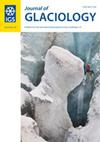Automated prediction of wet-snow avalanche activity in the Swiss Alps
IF 2.6
3区 地球科学
Q2 GEOGRAPHY, PHYSICAL
引用次数: 3
Abstract
Wet-snow avalanches are triggered by the infiltration of liquid water which weakens the snowpack. Wet-snow avalanches are among the most destructive avalanches, yet their release mechanism is not sufficiently understood for a process-based prediction model. Therefore, we followed a data-driven approach and developed a random forest model, depending on slope aspect, to predict the local wet-snow avalanche activity at the locations of 124 automated weather stations distributed throughout the Swiss Alps. The input variables were the snow and weather data recorded by the stations over the past 20 years. The target variable was based on manual observations over the same 20-year period. To filter out erroneous reports, we defined the days with wet-snow avalanches in a stringent manner, selecting only the most extreme active or inactive days, which reduced the size of the dataset but increased the reliability of the target variable. The model was trained with weather variables and variables computed from simulated snow stratigraphy in 38 $^\circ$ slopes facing the 4 cardinal directions. While model development and validation were done in nowcast mode, we also studied model performance in 24-hour forecast mode by using input variables computed from a numerical weather prediction (NWP) model. Overall, the performance was good in both nowcast and forecast mode (f1-score around 0.8). To assess model performance beyond the stringent definition of wet-snow avalanche days, we compared model predictions to wet-snow avalanche activity over the entire Swiss Alps, based on the raw data over 8 winters. We obtained a Spearman correlation coefficient of 0.71. Hence, our model represents a step toward the application of support tools in operational wet-snow avalanche forecasting.瑞士阿尔卑斯山湿雪崩活动的自动预测
湿雪雪崩是由液态水的渗透引发的,液态水会削弱积雪。湿雪雪崩是最具破坏性的雪崩之一,但其释放机制对于基于过程的预测模型来说还不够了解。因此,我们采用数据驱动的方法,根据坡度,开发了一个随机森林模型,以预测分布在瑞士阿尔卑斯山各地的124个自动气象站所在地的当地湿雪崩活动。输入变量是过去20年中气象站记录的雪和天气数据。目标变量基于20年期间的人工观测。为了过滤错误的报告,我们以严格的方式定义了湿雪雪崩的天数,只选择最极端的活动或非活动天数,这减少了数据集的大小,但提高了目标变量的可靠性。该模型使用天气变量和模拟雪地层中面向4个主要方向的38$^\circ$斜坡中计算的变量进行训练。虽然模型的开发和验证是在nowcast模式下进行的,但我们也通过使用数值天气预报(NWP)模型计算的输入变量来研究24小时预报模式下的模型性能。总的来说,在nowcast和预测模式下的性能都很好(f1得分约为0.8)。为了评估超出湿雪崩天数严格定义的模型性能,我们根据8个冬天的原始数据,将模型预测与整个瑞士阿尔卑斯山的湿雪崩活动进行了比较。我们得到的斯皮尔曼相关系数为0.71。因此,我们的模型代表着支持工具在湿雪崩预报中的应用迈出了一步。
本文章由计算机程序翻译,如有差异,请以英文原文为准。
求助全文
约1分钟内获得全文
求助全文
来源期刊

Journal of Glaciology
地学-地球科学综合
CiteScore
5.80
自引率
14.70%
发文量
101
审稿时长
6 months
期刊介绍:
Journal of Glaciology publishes original scientific articles and letters in any aspect of glaciology- the study of ice. Studies of natural, artificial, and extraterrestrial ice and snow, as well as interactions between ice, snow and the atmospheric, oceanic and subglacial environment are all eligible. They may be based on field work, remote sensing, laboratory investigations, theoretical analysis or numerical modelling, or may report on newly developed glaciological instruments. Subjects covered recently in the Journal have included palaeoclimatology and the chemistry of the atmosphere as revealed in ice cores; theoretical and applied physics and chemistry of ice; the dynamics of glaciers and ice sheets, and changes in their extent and mass under climatic forcing; glacier energy balances at all scales; glacial landforms, and glaciers as geomorphic agents; snow science in all its aspects; ice as a host for surface and subglacial ecosystems; sea ice, icebergs and lake ice; and avalanche dynamics and other glacial hazards to human activity. Studies of permafrost and of ice in the Earth’s atmosphere are also within the domain of the Journal, as are interdisciplinary applications to engineering, biological, and social sciences, and studies in the history of glaciology.
 求助内容:
求助内容: 应助结果提醒方式:
应助结果提醒方式:


